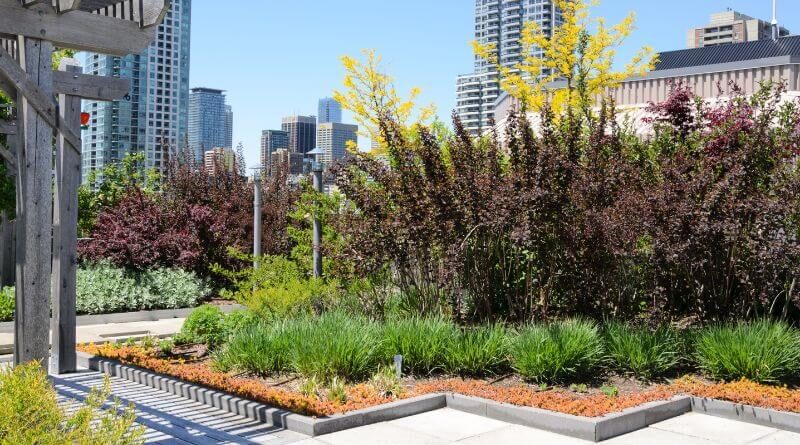What are green roofs and what are they good for?
What’s a green roof?
The green roof system functions as a complementation to the roof of the building, where you can grow plants. Depending on the type of green roof you install, the plants can be modular or have drainage layers. However, all green roofs include several important elements, such as waterproofing and root repellent, to keep the structure safe and intact.
Types of green roofs
There are two basic types of green roofs: intensive and extensive. These vary in the amount of vegetation used. While extensive green roofs can hold about 11 kg of vegetation per m2, intensive green roofs can hold approximately up to 70 kg per m2.
Another factor that distinguishes these two types is the amount of work required to maintain them. Intensive green roofs, as the name suggests, require much more work because they involve keeping different types of plants separate and maintaining a real garden. By contrast, extensive green roofs are allowed to grow naturally and unrestrictedly, as in the wild, and therefore require only annual weeding and fertilisation.
The intensive green roof type allows you to choose the flowers according to your imagination and requirements, ensuring a pleasant aesthetic. Extensive green roofs are designed to be accessed only for annual maintenance, so they naturally grow more than their intensive counterparts, making it more difficult to move around and enjoy the flora.
Both green roofs use a layering system that creates a foundation for the flower beds using a variety of soil, mats, and other materials that store nutrients while pushing out all waste by products. These layers mimic the soil profile, creating a drainage process that allows safe filtration of the fluids while feeding the plants.
Recent studies and advances have led to a new form of green roofs, known as complex roofs. This format is designed to support a wide range of plants that are commonly found in intensive roofs, while allowing support for a larger amount of vegetation such as extensive roofs.
The benefits of a green roof
There are a number of reasons why one might want a green roof. The benefits are for both the societies and individuals.
Benefits to the societies include the following examples:
- Installing a green roof reduces the need to manage rainwater that accumulates and also reduces the burden on local sewage systems.
- In cities, green roofs reduce the total heat released by buildings and cover many of the surfaces that would generate the most heat.
- Plants prevent the spread of smog and dust while trapping many pollutants in the air.
- Green roofs can be used as public spaces such as gardens or recreational areas enjoyable by the whole community.
- The amount of work and money needed for creating and installing green roofs and using them in the neighbourhoods can lead to increasing jobs and income for local businesses.
Benefits for individuals include as follows:
- The green roofs are soundproofing.
- The roof membrane lasts much longer because its surface is protected from the elements.
- Green roofs reduce the amount of energy your home uses for heating, saving you money.
- Green roof as fire protection makes your home safe.
- Green roofs use waste products that would otherwise end up in landfills.
- You increase the value of your property by increasing the efficiency of your appliances, and your home becomes more aesthetically pleasing.

